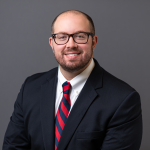Platelet-rich plasma (PRP) therapy has gained attention in orthopedics as a potential treatment for various joint and tendon conditions. But how effective is it, and who is it for? Dr. Jason Brustein, an orthopedic surgeon at Resurgens Orthopaedics, shares insights on PRP's role in treating orthopedic conditions.
Understanding PRP
Platelet-Rich Plasma (PRP) therapy is an innovative
treatment that harnesses the body's natural healing capabilities. Dr. Brustein
provides a clear explanation of what PRP actually is and how it works:
"PRP is basically taking a patient's own blood,
spinning it down in a centrifuge, which separates out the different components
of blood, and what we're left with is the plasma and the platelets. These contain something called growth
factors. Growth factors are like the body's stem cells that have the capability
to heal damaged tissue and damaged tendons."
The key distinction between PRP and other treatments lies in
its potential to address the underlying issue, rather than just mask symptoms. Dr. Brustein emphasizes this crucial
difference: "PRP is the only option we have where there is the ability to
biologically restore damaged tissue and damaged cartilage."
The Tire Analogy: PRP vs. Alternative Treatments
To illustrate this concept, Dr. Brustein uses an analogy
that patients find helpful:
"I talk to people about their knees like a tire on a
car. As you put more miles on the tire, you'll wear the threads of the tires. Over
time, when you go out to the garage, you see that the threads on your tires
start to get low. Each time you go out to the garage and look at your
tires you realize those threads never magically come back."
Things like oral medicines, steroid injections, gel
injections are, in a way, putting more air in the tire, but it's doing nothing to
the threads of the tire. That is the difference between what PRP can do versus
the alternatives."
While other treatments may provide temporary relief, PRP
aims to actually repair and restore the damaged tissue. However, Dr. Brustein
is careful to note that PRP is not a cure-all solution: "It's not a
panacea. It's not a perfect solution." The effectiveness can vary depending
on the individual and the specific condition being treated.
Evidence for Effectiveness
While acknowledging that some data is mixed, Dr. Brustein
notes that overall, the evidence is promising. He references the American
Academy of Orthopedic Surgeons' technology overview, stating,
"Overwhelmingly, the data is favorable for PRP versus the
alternatives."
It's important to note that the effectiveness of PRP can
vary depending on the specific condition and the individual patient. He
explains, "Not everybody would benefit from a PRP injection, such as
people with severe arthritis."
According to Dr. Brustein, ideal candidates for PRP are
"younger patients who are otherwise healthy, who are interested in
biologic therapies to restore their joints and degenerated tendons back to a
better state of health that don't have end stage arthritis."
When it comes to evaluating the evidence, Dr. Brustein
advises looking at reputable sources to avoid misinformation about PRP.
Conditions Showing Promise
Dr. Brustein identifies several conditions where PRP shows
the most promise:
1. Osteoarthritis of the knee
2. Rotator cuff pathology
3. Tennis elbow
4. Patellar tendonitis
Dr. Brustein
summarizes these conditions as "the kind of routine types of tendonitis
that we see from overuse, or from people who are weekend warriors or
amateur athletes who are just getting back in the gym."
There are also
potential applications for hip arthritis, though Dr. Brustein notes that the
evidence isn't as strong as it is for knee arthritis.
Setting Realistic Expectations
While PRP therapy shows promise for various orthopedic
conditions, it's crucial to approach this treatment with realistic
expectations. Dr. Brustein emphasizes the importance of clear communication
about what PRP can and cannot do, "This is the option to leverage your own
biology to heal yourself. Results can be varied. There is no guarantee of
relief, nor is there any guarantee of any specific changes."
In terms of measuring results, Dr. Brustein explains that in
clinical practice, they focus on patient-reported outcomes and clinical improvement.
This approach prioritizes how patients feel and function rather than solely
relying on imaging results.
PRP can be a viable alternative to more invasive procedures.
"In somebody who's trying to avoid a joint replacement and is looking for
these types of options, this is a good choice, but there is no guarantee of
relief," Dr. Brustein explains.
Dr. Brustein advises patients to be wary of clinics or
practitioners making exaggerated claims about PRP. He suggests looking for
information from reputable sources, such as orthopedic societies.
While PRP shows promise in orthopedics, particularly for
certain conditions and patient groups, it's important to consult with a
qualified specialist to determine if it's the right option for your specific
case. As Dr. Brustein puts it, PRP is "the best opportunity we have right
now to utilize our own body's capability to heal itself."
Ready to explore if PRP therapy is right for you? Schedule an appointment with Dr. Jason Brustein today to discuss your treatment options. Don't wait to take the first step toward restoring your joint health and alleviating pain.
